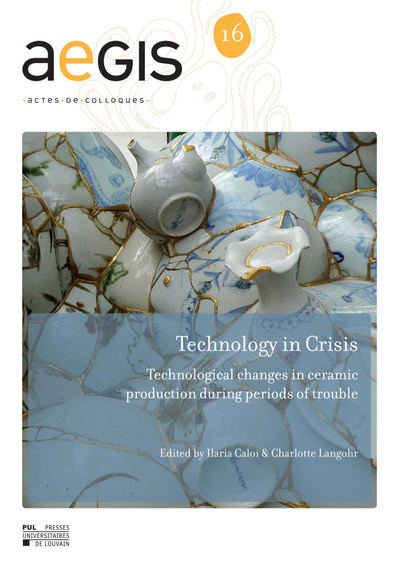- EAN13
- 9782875587497
- Éditeur
- Presses universitaires de Louvain
- Date de publication
- 6 avril 2019
- Collection
- AEGIS
- Nombre de pages
- 238
- Dimensions
- 29,7 x 21 cm
- Poids
- 20 g
- Langue
- eng
Technology In Crisis, Technological Changes In Ceramic Production During Periods Of Trouble
Ilaria Caloi, Charlotte Langohr
Presses universitaires de Louvain
Prix public : 29,00 €
This volume comprises the proceedings of a workshop with the same title which took place in February 2016 at UCLouvain (Louvain-la-Neuve, Belgium). It was organised within the framework of the ARC13/18-049 (concerted research action) "A World in Crisis?". This workshop questioned the reliability of pottery as crisis indicator within the archaeological data set. More particularly, following the perspective of archaeological and anthropological research that assesses pottery technology as a social product, there is an interest in addressing the social and cultural aspects of technological change in pottery production in the specifi c context of crisis and period of trouble. The main goal of our examination was to detect whether and how technological choices or changes observed in the archaeological ceramic record may refl ect periods of transition, disruption, crisis or change pertaining to social, political, economic and environmental conditions. We proposed to address these questions by bringing together experts in charge of the study of pottery at diff erent Bronze Age Mediterranean sites in order to discuss, confront and contextualise their respective assemblages and associated contexts. This two-day workshop emphasised that the majority of our case studies allow the identifi cation of continuous changes in pottery production systems, i.e. changes that do not evidence any clear cessation of transmission in potting practices. These are interpreted as indicators of periods of transition, of socio-political and economic transformation, rather than moments of crisis or disruption. On the contrary, discontinuous changes in pottery production systems have been observed in those contexts where new paste recipes and/or innovative forming techniques were introduced by foreigners and adopted by local people. Finally, the contributions also highlighted that our observations needed to be replaced in a broader contextual framework, especially in the case of the Late Bronze Age (13th-12th c. BC ) Mediterranean systems' collapse. Indeed, several archaeological contexts here examined have demonstrated a relative continuity of ceramic traditions at the 13th-12th c. BC transition, while other forms of transmitted technological knowledge had abruptly stopped.


















